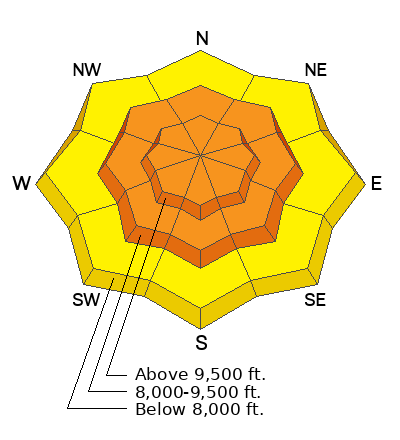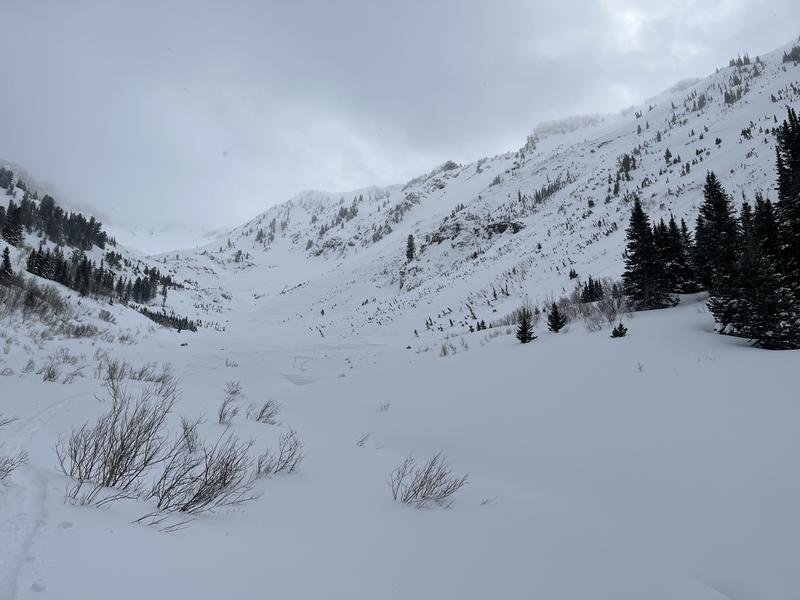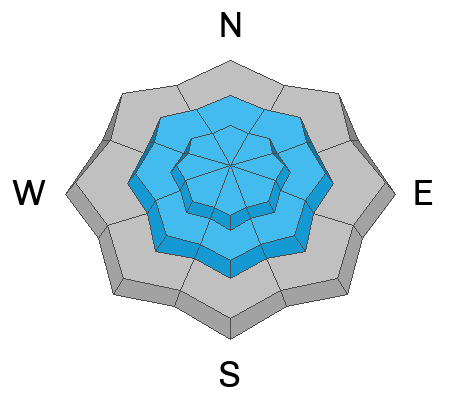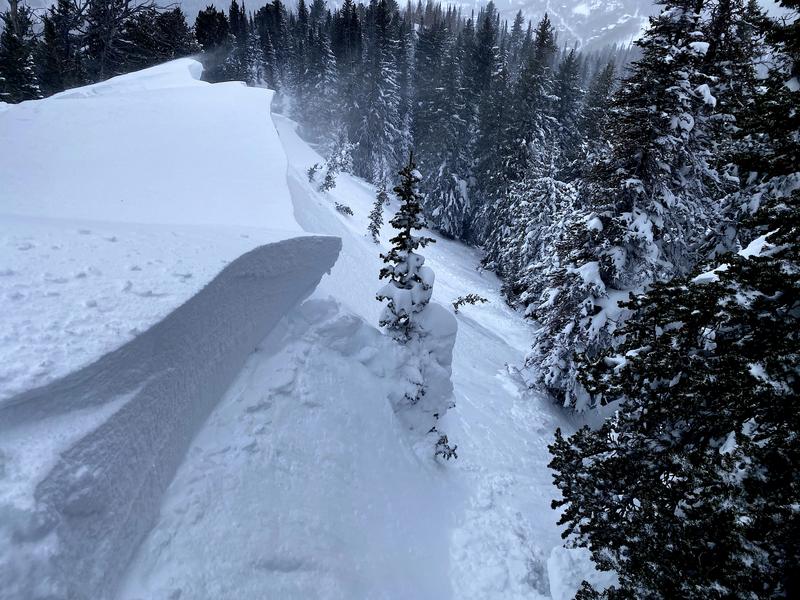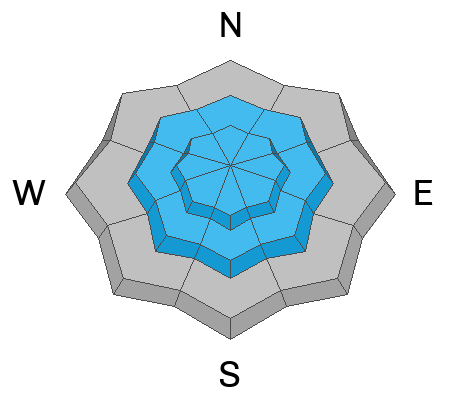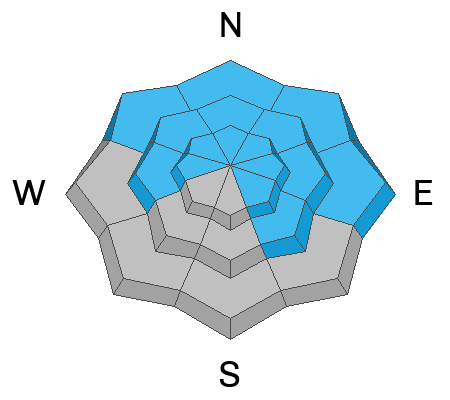Overnight mountain locations reported no new snow, and 1-3" of new snow since yesterday morning. That brings final storm totals up to 20-33" of snow.
Under mostly clear skies, temperatures are in the mid-20s F. Winds have transitioned more west, south westerly, and are blowing 10-20 mph, with the upper elevation ridgelines gusting up to 30 mph.
Today, skies will be partly cloudy temperatures will climb into the upper-30s F. Winds will continue to decrease, blowing 5-15 mph at mid-elevation ridgelines, and blowing 15-25 mph with gusts up to 30 mph at the highest ridgelines. Some light snowfall is possible Saturday with a weakening through, but otherwise, the next real storm should arrive Sunday.
No new avalanches reported in the Provo area backcountry.
In the Central Wasatch, multiple users observered triggered sensitive soft slabs within the new snow and wind-drifted snow. As visibility improved, there were also two reports of larger natural avalanches that could have failed on the persistent weak layer of faceted grains near the bottom of the snowpack. This includes one large avalanche reported on the East facing terrain on the Butler Basin side of Gobblers Knob, the crown appears to be anywhere from 6-9' deep. Trent is heading up there today to investigate what layer this avalanche occurred on. The second large avalanche reported was in Mineral Fork. The entire western side, from Barrieto to Moonlight avalanched.
Mineral Fork Avalanche - Find full observation HERE.
On Tuesday, the Provo area mountains went through an impressive natural cycle yesterday morning. Including large hard slab avalanches as well as wet-loose avalanches. One of the most impressive being Bridalviel falls. Find the full observation
HERE.
Find all recent avalanches
HERE.
